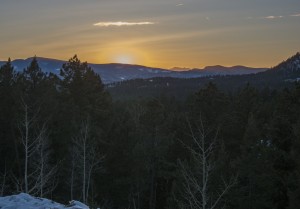I’m glad that I invested ($60 sale price) in Joel Sartore’s photography course at Great Courses. Sartore, who shoots for National Geographic, offers an immense amount of insight to aspiring photographers. He stresses that his course is not about buying lots of expensive equipment (though he certainly demonstrates what one can do with tripods, flashes and various types of lenses), but rather how to see, how to work a scene and how to cull through one’s images for the ones that are really worth sharing. He does this in 24 30-minute lectures, most of which I have already watched, and I consider his course to be an excellent investment, at least at the sale price that was offered a few weeks ago.
Sartore often mentioned that photos are 2-dimensional versions of 3-dimensional reality, and the trick is to give one’s photo depth by “layering” the photo. What this requires is to frame the scene so that one can see objects at varying depths. I’ve been consciously working on this ever since. Here are a couple images I’ve taken over the past two weeks, where I’ve tried to layer the scene. The first is a simple trees-in-the-snow photo. I thought it looked cool to see the layers of trees stretching into the background (click on these images for higher resolution versions):
Here’s a photo I took two evenings ago. It’s a sunset south of Denver. This scene will be layered no matter how you shoot it, based on the rows of trees and mountains, but I added the outcropping of snow for an additional layer, and I was quite happy with the result:
One more thing about the above photos: I’ve touched both of them up with Lightroom 4, which has made photography much more enjoyable for me. It gives me the power of lightening up only certain sections of the light spectrum, leaving others alone. The RAW version of the above photo looked like a disaster, even though the scene was gorgeous, somewhat resembling the above version. The problem is that if I focused on the sky, the land was black, and if I focused on the land, the sky was almost whited out. Here’s the original photo, unretouched:
Another approach to scene like this would be to take an HDR photo. I didn’t have a tripod with me at the time, or I would have tried that too. For those interested, the above scenes were shot with a small point and shoot camera, Canon’s S95.





Hey, I think I recognize that park. Nice shot and thanks for the photography post. HDR photos can be knockouts bordering on being unbelievably stunning.
Michael. This was taken in Divide, Colorado, in the general vicinity of Pike’s Peak (though Pike’s Peak is not in the mountain photo). Glad you enjoyed the post.